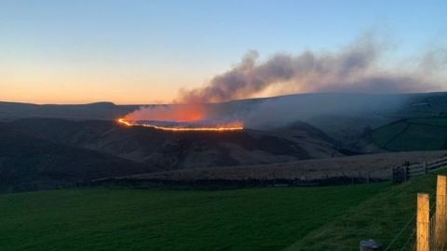The summer heatwave of 2018 was accompanied by wildfires across the UK with a major incident declared at Saddleworth Moor in the Peak District where homes in nearby villages had to be evacuated. The wildfire problem has hit the headlines again with record breaking Spring temperatures accompanied by several serious outbreaks including peatland at the National Trust’s Marsden Moor. The threat to human lives, disruption to travel as well as the huge financial costs in tackling the fires and dealing with the damaging consequences deserves urgent national attention.
The media response has picked up on moorland management and heather burning as critical factors. Peatland conservation and sporting interests have been pitched against each other over the question of burning or not burning as the best way to address wildfires. Scientific opinion has also been divided but in the confusion, we risk missing the bigger picture. Wet bogs don’t burn and don’t need burning. Rewetting blanket bogs within our moorlands and conserving those that are already in good condition clearly must be the shared goal in any effective strategy to address wildfires.
On peatlands, high fuel loads of heather and grasses and dry exposed peat are consequences of lower water tables from drainage, compounded by grazing and repeated burning. A healthy peatland with high, stable, water tables and Sphagnum growth, naturally suppress heather. If fire does occur it moves quickly over what little dry material there is and the wet peat is unlikely to burn.
With consensus around burning being inappropriate on healthy blanket bog, not least as there is so little to burn anyway, we are left with the question of what to do with the heather that occupies recovering peatlands during rewetting. The natural shift from heather to Sphagnum can be surprisingly quick, within a few years in some sites but may take a few decades in more damaged and challenging areas. With increasing likelihood of climate change bringing more extreme periods of dry weather it is important to tackle the fire risk on these recovering peatlands.

